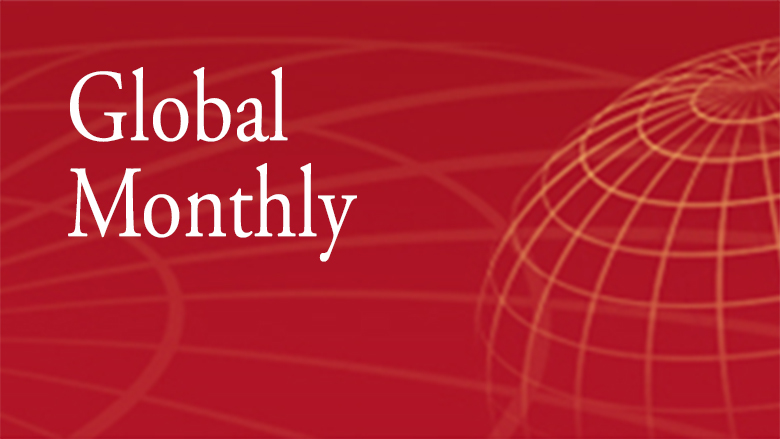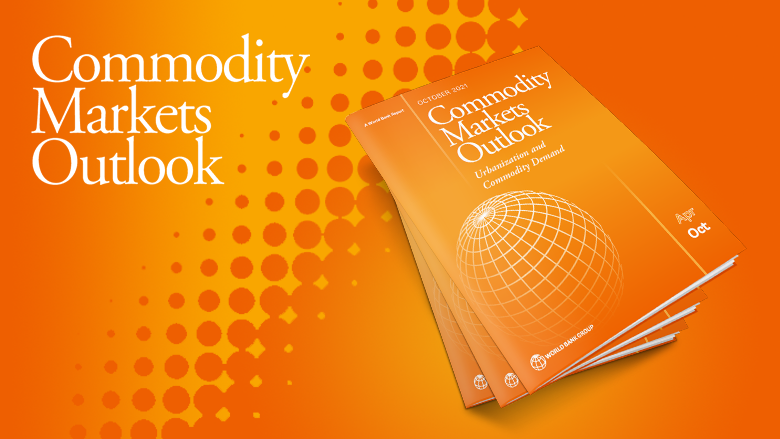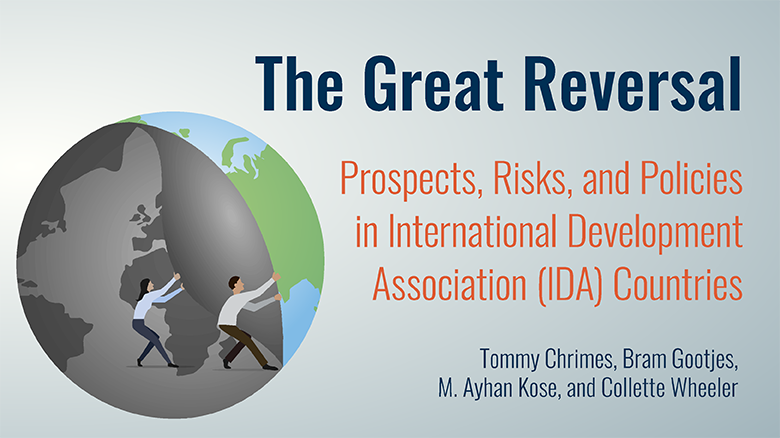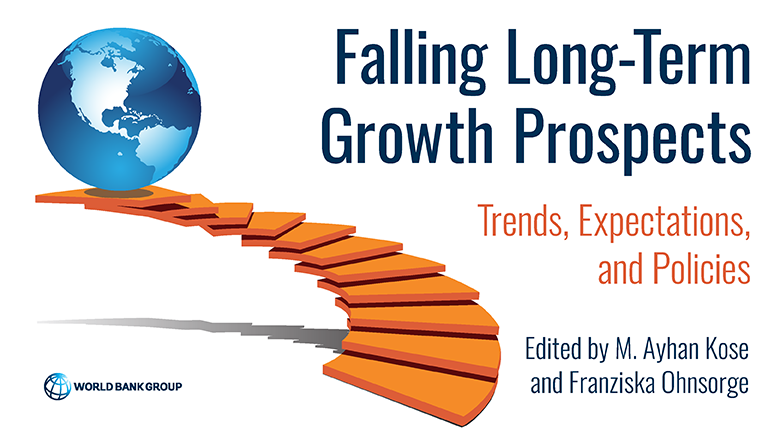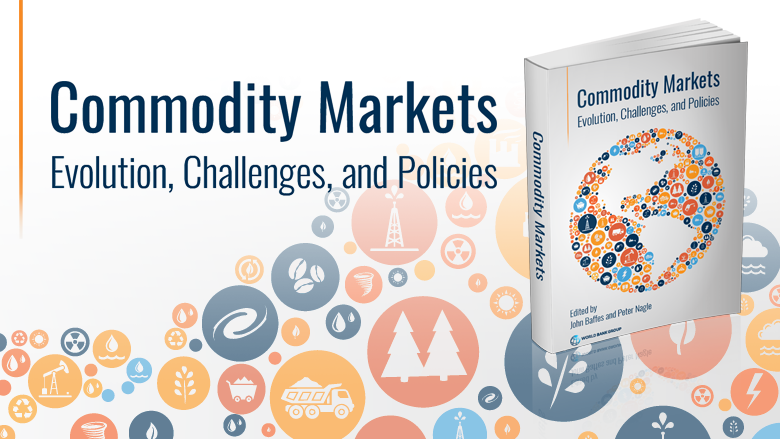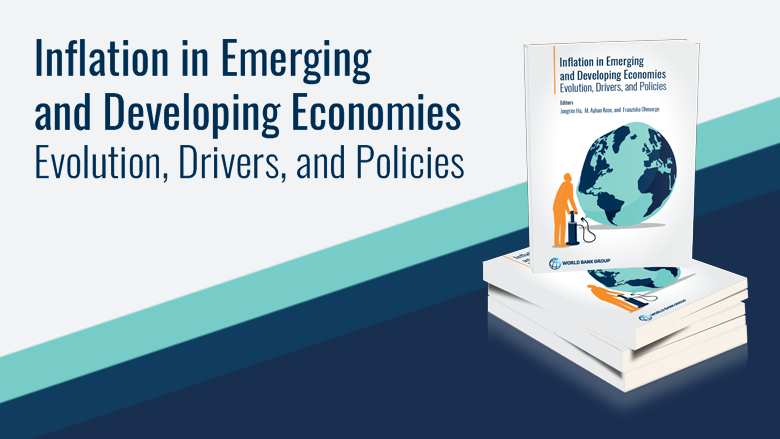
Global Economic Prospects
Growth Stabilizing But at a Weak Pace
Despite an improvement in near-term prospects, the global outlook remains subdued by historical standards. In 2024-25, growth is set to underperform its 2010s average in nearly 60 percent of economies, comprising over 80 percent of the global population. Downside risks predominate, including geopolitical tensions, trade fragmentation, higher-for-longer interest rates, and climate-related disasters. Global cooperation is needed to safeguard trade, support green and digital transitions, deliver debt relief, and improve food security. In EMDEs, public investment can boost productivity and catalyze private investment, promoting long-run growth. Comprehensive fiscal reforms are essential to address ongoing fiscal challenges in small states, including those arising from heightened exposure to external shocks.
-
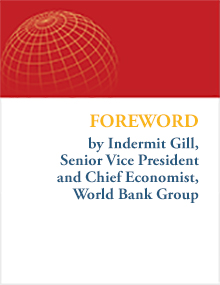 Foreword
ForewordPolicymakers have cause to celebrate today, World Bank Group Chief Economist and Senior Vice President Indermit Gill, writes in his Foreword. The global economy appears to be in final approach for a “soft landing” in 2024, indicating that a global recession has been avoided despite the steepest rise in global interest rates since the 1980s. Yet policymakers “would be wise to keep their eye on the ball,” Gill writes. “Growth rates remain too slow for progress. Without stronger international cooperation and a concerted push for policies that advance shared prosperity, the world could become stuck in the slow lane."
Global and Regional Outlooks
-
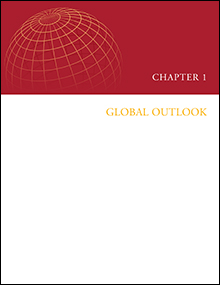 Global
GlobalGlobal growth is projected to hold steady at 2.6 percent this year. Given continued inflationary pressures, central banks are likely to remain cautious in easing policy; accordingly, benchmark policy interest rates are envisaged to be notably higher than before the pandemic. Global growth over the forecast horizon is expected to remain lackluster, at nearly half a percentage point below its 2010-19 average. High debt and elevated debt-servicing costs highlight the need for EMDE policy makers to balance sizable investment needs with fiscal sustainability. To bolster long-term growth, policy action to raise productivity growth, improve public investment efficiency, build human capital, and close labor market gender gaps is critical.
-
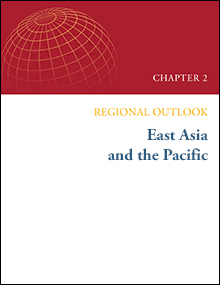 East Asia and Pacific
East Asia and PacificGrowth in the East Asia and Pacific (EAP) region is projected to slow from 5.1 percent in 2023 to 4.8 percent in 2024, mainly reflecting a deceleration of activity in China. In the region excluding China, growth is projected to increase to 4.6 percent this year, supported by a recovery in global trade. Over the next two years, growth in EAP is projected to continue moderating—to 4.2 percent in 2025 and 4.1 percent in 2026, as a further slowdown in China again offsets a modest pickup elsewhere in the region. While risks to the outlook are somewhat more balanced than in January, they remain tilted to the downside. Risks stem particularly from worsening conflicts and heightened geopolitical tensions at the global level, further trade policy fragmentation, and a sharper-than-projected slowdown in China, with adverse spillovers to the broader region. Tighter global financial conditions and climate-related natural disasters pose additional downside risks. In contrast, faster-than-expected U.S. growth could have positive spillovers to regional activity.
-
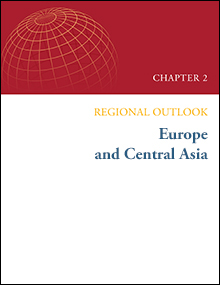 Europe and Central Asia
Europe and Central AsiaGrowth in Europe and Central Asia (ECA) is projected to soften to 3.0 percent this year and to 2.9 percent in 2025. The slowdown in 2024 largely reflects decelerations in the Russian Federation and Türkiye. Excluding these two economies and Ukraine, growth is projected to firm this year and next, as inflation eases, monetary policy rates are cut, and the growth of exports, particularly to the euro area, strengthens. Geopolitical developments remain the predominant downside risk to the growth outlook, especially those linked to Russia’s invasion of Ukraine and conflict in the Middle East. Uncertainty about economic policies is also likely to remain elevated. Although the risks of higher-than-expected inflation have decreased, there could still be upward pressure on commodity prices or wages, along with potential new episodes of financial strains.
-
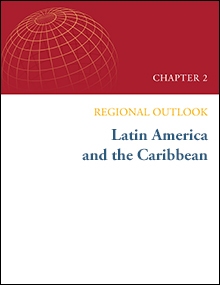 Latin America and the Caribbean
Latin America and the CaribbeanGrowth in Latin America and the Caribbean (LAC) is forecast to decelerate from 2.2 percent in 2023 to 1.8 in 2024 (after the peak in interest rates in 2023) before picking up to 2.7 percent in 2025. The forecast for 2024 has been revised downward since January, mainly because of a marked downgrade for Argentina, which is now expected to contract this year before resuming growth next year. Risks to the forecast are tilted to the downside. Tighter-than-assumed global financial conditions, as well as elevated local debt levels, could weigh on private demand and require accelerated fiscal consolidation in the region. A further growth slowdown in China could hurt LAC’s exports, particularly from South America. Extreme weather events related to climate change pose another downside risk. On the upside, stronger-than-expected activity in the United States could enhance regional growth, particularly in Central America and the Caribbean.
-
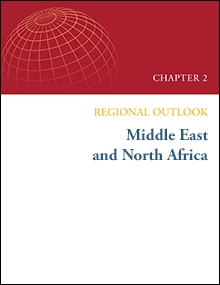 Middle East and North Africa
Middle East and North AfricaAfter slowing to 1.5 percent in 2023, growth in the Middle East and North Africa (MNA) region is expected to pick up to 2.8 percent in 2024 and 4.2 percent in 2025, mainly due to a gradual resumption of oil production. The outlook for 2024 has weakened since January, partly reflecting extensions of additional voluntary oil production cuts and the ongoing conflict in the Middle East centered in Gaza. Risks to the outlook are tilted to the downside. Key downside risks include an escalation of armed conflicts, heightened local violence and social tensions, a sudden tightening in global financial conditions, more frequent or severe natural disasters, and weaker-than-projected growth in China. Conversely, stronger-than-expected activity in the United States and associated spillovers entail an important upside risk.
-
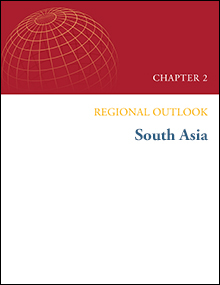 South Asia
South AsiaGrowth in the South Asia (SAR) region is projected to slow from 6.6 percent in 2023 to 6.2 percent in 2024, mainly due to a moderation of growth in India from a high base in recent years. With steady growth in India, regional growth is forecast to stay at 6.2 percent in 2025-26. Among the region’s other economies, growth is expected to remain robust in Bangladesh, though at a slower rate than in the past several years, and to strengthen in Pakistan and Sri Lanka. However, risks to the outlook remain tilted to the downside. These include disruptions in commodity markets caused by the escalation of armed conflicts, possible abrupt fiscal consolidations, financial instability stemming from the large exposure of banks to sovereign borrowers, more frequent or severe extreme weather events, and slower-than-expected growth in China and Europe. Conversely, stronger-than-projected activity in the United States and faster-than-expected global disinflation are upside risks to the forecast.
-
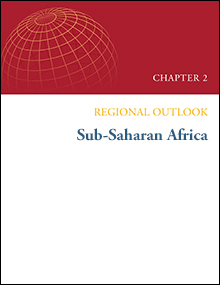 Sub-Saharan Africa
Sub-Saharan AfricaGrowth in Sub-Saharan Africa is projected to pick up to 3.5 percent in 2024, and average about 4 percent in 2025-26, as inflation retreats and private consumption and investment improve. The projected recovery is somewhat weaker than January’s forecast, largely reflecting the damaging effects of recent increases in political instability and conflict that have delayed recovery in parts of the region. Importantly, the expected increase in per capita income is insufficient to make significant progress on poverty alleviation in the region. Recent growth in debt-service costs has sharply narrowed fiscal space and exacerbated financing needs in many economies. Risks to the outlook remain tilted to the downside. These risks include increasing global geopolitical tensions, especially an escalation of conflict in the Middle East; a further deterioration in regional political stability; a sharper-than-expected economic slowdown in China; greater frequency and intensity of adverse weather events; and a heightened risk of government debt distress.
Two Topical Issues
-
 Harnessing the Benefits of Public Investment
Harnessing the Benefits of Public InvestmentA significant acceleration in investment is essential if emerging market and developing economies (EMDEs) are to achieve key development goals and tackle the challenges associated with climate change. Investment—public as well as private—tends to fuel a virtuous cycle of development, boosting growth, improving productivity, and reducing poverty. In EMDEs, however, investment growth has seen a sustained slowdown since the global financial crisis and is expected to remain weak in the coming years. Policy action is necessary to reverse this trend. Public investment averages about one-quarter of total investment in the median EMDE—a modest share. Yet it can be a powerful policy lever to help ignite growth, including by helping to catalyze private investment. This chapter offers a comprehensive assessment of public investment and its macroeconomic effects in EMDEs. It finds that public investment in these economies has experienced a historic slowdown in the past decade. In EMDEs with ample fiscal space and a record of efficient government spending, on average, scaling up of public investment by one percent of GDP can increase output by up to 1.6 percent over five years. Public investment also crowds in private investment and boosts productivity, promoting long-run economic growth in these economies. To maximize the impact of public investment, EMDEs should undertake wide-ranging policy reforms to improve public investment efficiency—by, among other things, strengthening governance and fiscal administration—and create fiscal space through revenue and expenditure measures. The global community can play an important role in facilitating these reforms—particularly in lower-income developing countries—through financial support and technical assistance.
-
 Fiscal Challenges in Small States; Weathering Storms, Rebuilding Resilience
Fiscal Challenges in Small States; Weathering Storms, Rebuilding ResilienceThe COVID-19 pandemic and the global shocks that followed have worsened fiscal and debt positions in small states, intensifying their already substantial fiscal challenges—especially the need to manage more frequent climate change-related natural disasters. Forty percent of the 35 emerging market and developing economies (EMDEs) that are small states are at high risk of debt distress or already in it, roughly twice the share for other EMDEs. Larger fiscal deficits since the pandemic reflect increased spending to support households and firms, and weaker revenues. To improve their fiscal sustainability and resilience to future shocks, small states need to strike a balance between maintaining adequate fiscal buffers and increasing investments in human capital and climate change-resilient infrastructure. Comprehensive fiscal reforms are essential. First, small states’ revenues, which are highly volatile and dependent on sometimes unreliable sources, should be drawn from a more stable and secure tax base. Second, spending efficiency needs to be improved, especially on transfers to public enterprises, subsidies, and the public wage bill. Third, these changes should be complemented by reforms to fiscal frameworks, including better utilization of fiscal rules and sovereign wealth funds. Finally, to help these countries stay on sustainable fiscal paths, well-coordinated and targeted global policies are also needed. Policies supported by the global community can help improve fiscal policy management, provide technical assistance, address debt challenges, and bolster funding for small states to invest in climate change resilience and adaptation, and other priority areas.
Downloads

- Full report (PDF, 6.2 MB)
- All charts and data (Zip, 3.4 MB)
- Presentation
- Press releases:
- January 2024 (4.6 MB)
- June 2023 (4.6 MB)
- Jan. 2023 (3.2 MB)
- June 2022 (3.2 MB)
- Jan. 2022 (12.3 MB)
- June 2021 (3.7 MB)
- Jan. 2021 (9.1 MB)
- June 2020 (12.8 MB)
- Jan. 2020 (3.7 MB)
- June 2019 (3.7 MB)
- Jan. 2019 (4.0 MB)
- June 2018 (4.2 MB)
- Jan. 2018 (4.2 MB)
- June 2017 (3.8 MB)
- Jan. 2017 (5.9 MB)
- June 2016 (3.9 MB)
- January 2024
- June 2023
- January 2023
- June 2022
- January 2022
- June 2021
- January 2021
- June 2020
- January 2020
- June 2019
- January 2019
- June 2018
- January 2018
- June 2017
- January 2017
- June 2016
- January 2016
- June 2015
- January 2015
- June 2014
- January 2014
- June 2013
- January 2013
- June 2012
- January 2012
- June 2011
- January 2011
- June 2010
- January 2010
- 2009
- 2008
- 2007
- 2006
- 2005
- 2004
- 2003
- 2002

